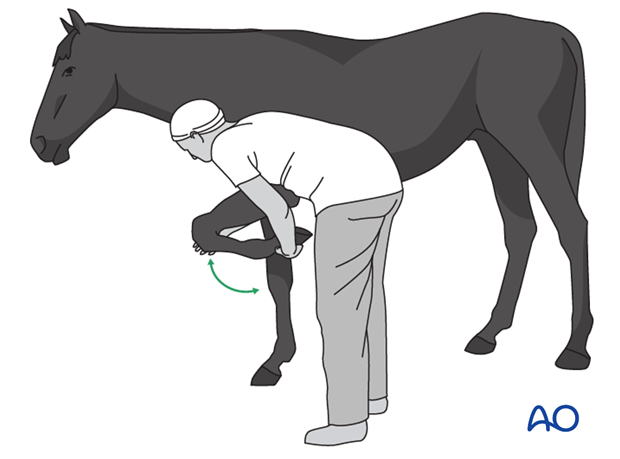Plate fixation
1. Principles
Either two short LCPs or one longer special plate are applied to the lateral aspect of the scapula. Special plates providing access to several screws in the cranial part, such as the human distal femur plate, have some advantages.
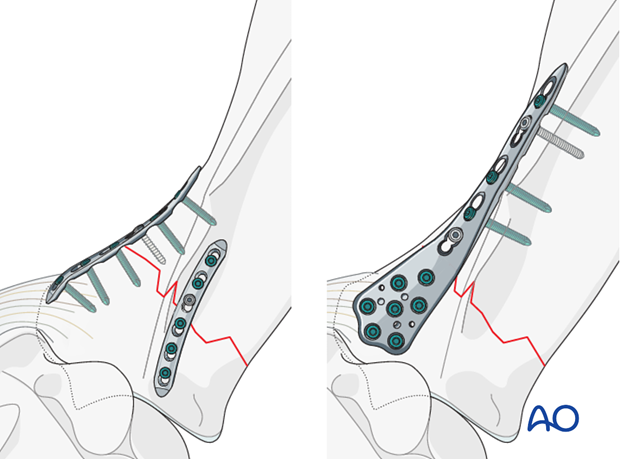
The benefits of the use of locking technology are:
- The screws are inserted at a right angle relative to tension created by the biceps tendon.
- The use of two LCPs bears the advantage of compressing a greater portion of the fracture plane (in two locations)
- Multiple angle stable screws can be implanted into the fragment with the human distal femur plate.
- Multiple screws can be implanted along the spine of the scapula with the human distal femur plate.
Cross-section of the scapula showing the position of the human distal femur plate along scapular spine.
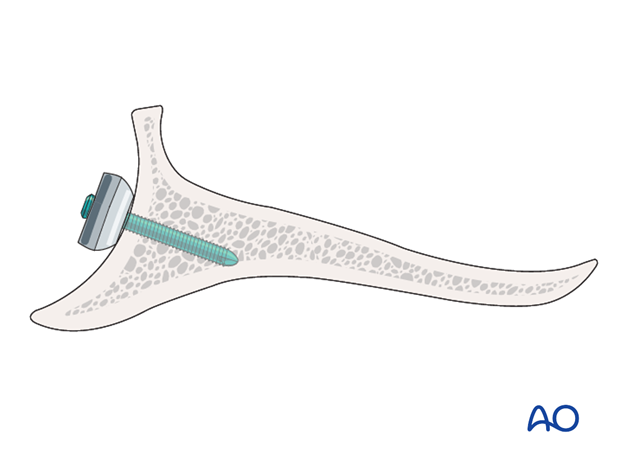
Read more about patient prognosis and implant removal.
2. Preparation and approach
This procedure is performed with the patient placed in lateral recumbency through the long craniolateral approach.
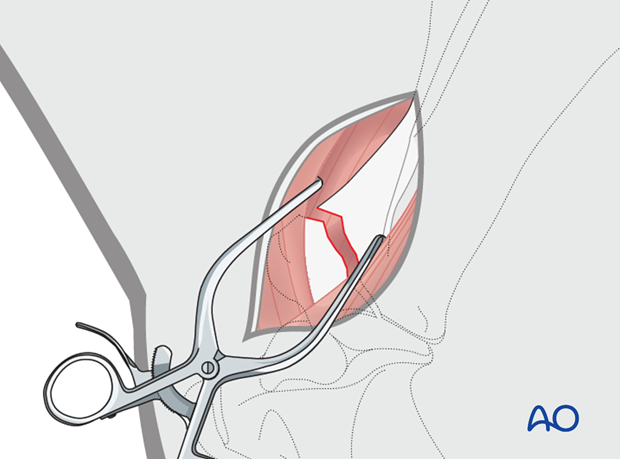
3. Reduction
The fracture is reduced and maintained in reduction with the help of the large pointed reduction forceps.
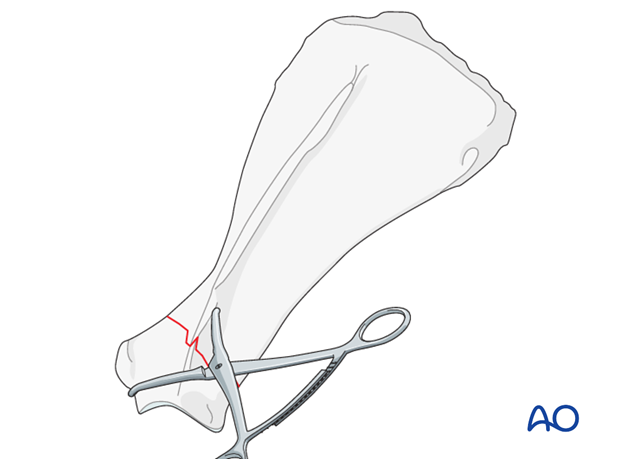
4. Fixation
Fixation with two short LCPs
The plate is contoured to the fracture site and pressed onto the bone surface by means of two push-pull devices through the outside holes of the plate.
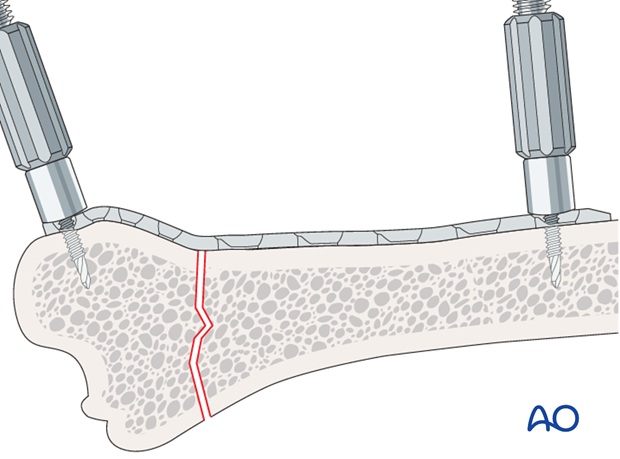
The first fracture-near locking screw is inserted in neutral position; the second one is a cortex screw in load position.
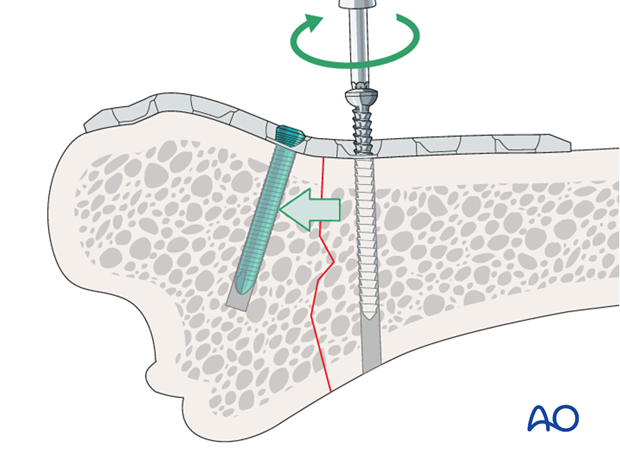
The remaining plate holes will be filled with locking head screws. They are thoroughly tightened.
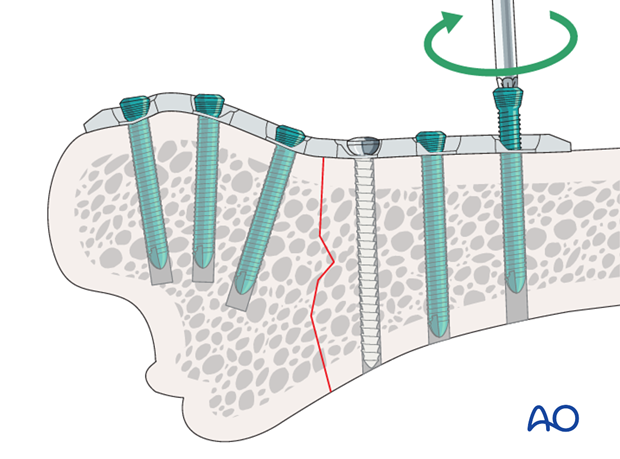
The second plate is applied caudal to the first plate applying identical technique.
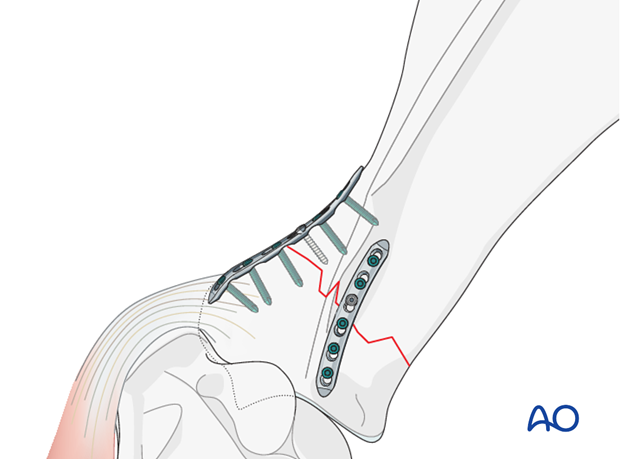
Fixation with human distal femur plate
The human distal femur plate is contoured to the fracture site.
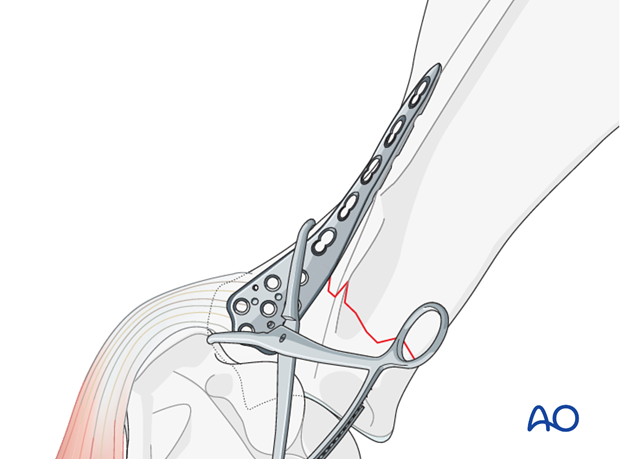
The plate is pressed onto the bone surface by means of two push-pull devices through the outside holes of the plate.

The two to three locking head screws are inserted in the head of the plate and thoroughly tightened.
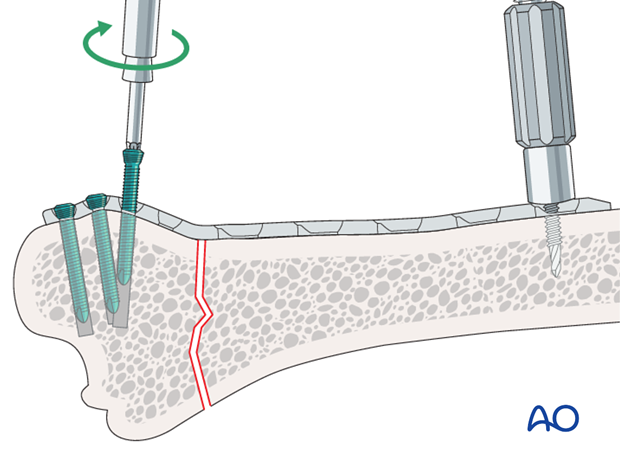
A 4.5mm cortex screw is inserted in load position through a combi hole in the shaft of the plate caudal to the fracture and solidly tightened. After drilling of the hole the push-pull device has to be removed to allow interfragmentary compression.
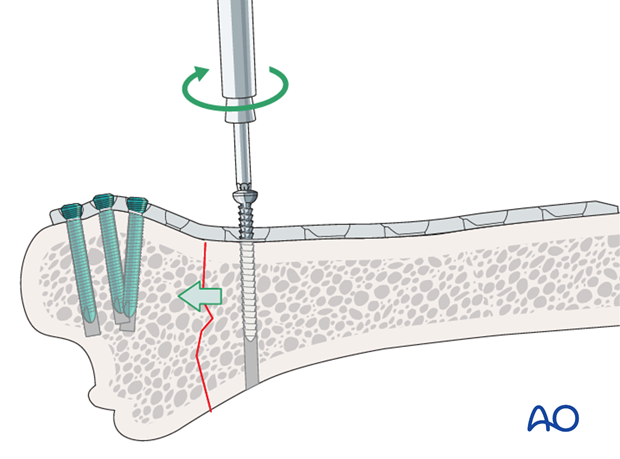
A second 4.5mm cortex screw is inserted in neutral position through the second last combi hole. This assures that the plate has solid contact with scapular body.
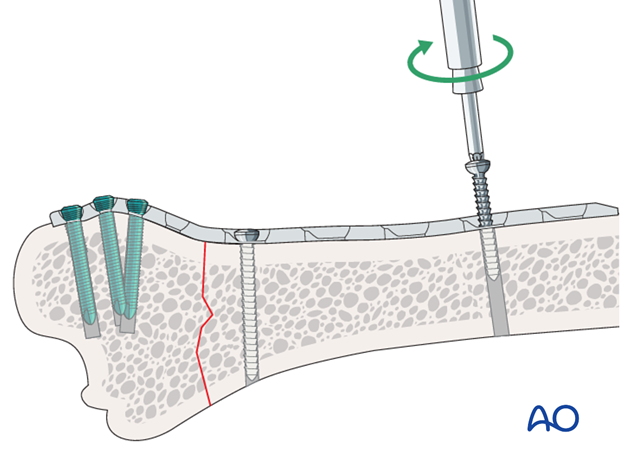
At least two locking head screws are inserted through the shaft of the plate. And the remaining combi holes are filled with either locking head- or cortex screws. The empty holes in the head of the plate are filled with locking head screws. All screws are checked for tightness.
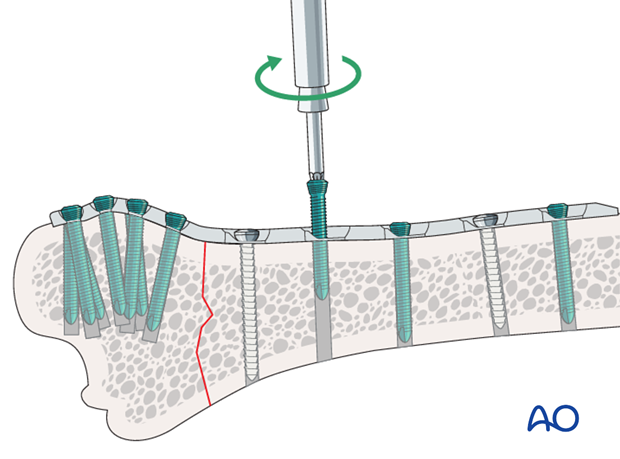
5. Closure
The soft tissues are closed in several layers. A simple continuous suture is placed in subcutaneous tissues, followed simple interrupted sutures in the skin covered by a stent bandage.
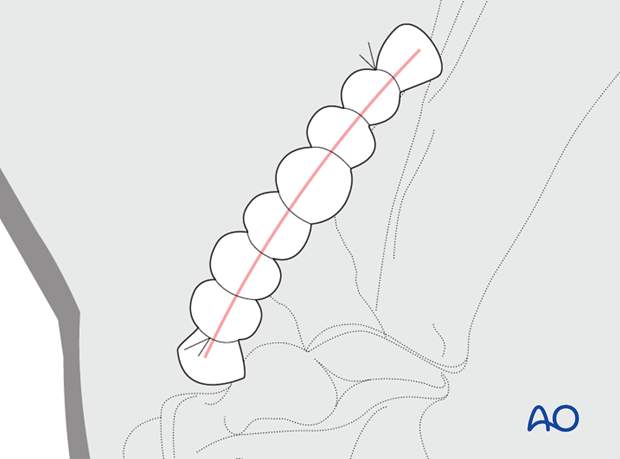
6. Aftercare
Horses are restricted to stall rest for 60 days to allow time for the dead space to fill with fibrous tissue and the biceps tendon to reattach. A carefully controlled rehabilitation program is important for these horses to regain strength and coordination in their shoulder joints.
Percutaneous stimulation of the shoulder muscles during rehabilitation to minimize muscle atrophy should be considered.
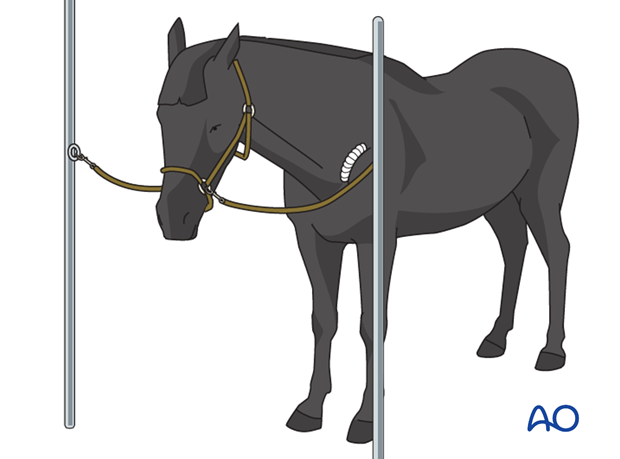
Typically, physical therapy begins with range-of-motion exercises and hand-walking for 5 minutes per day, followed by walking over ground poles and gradual increases in duration of exercise each day. Horses are not usually ready to return to training or to be turned out into a paddock for 6 to 12 months after surgery.
